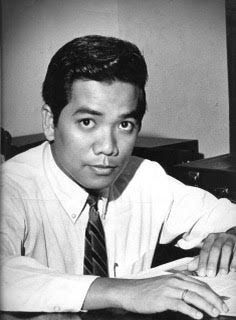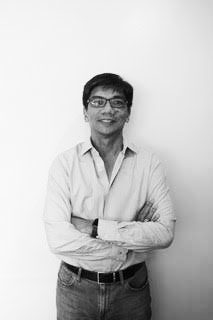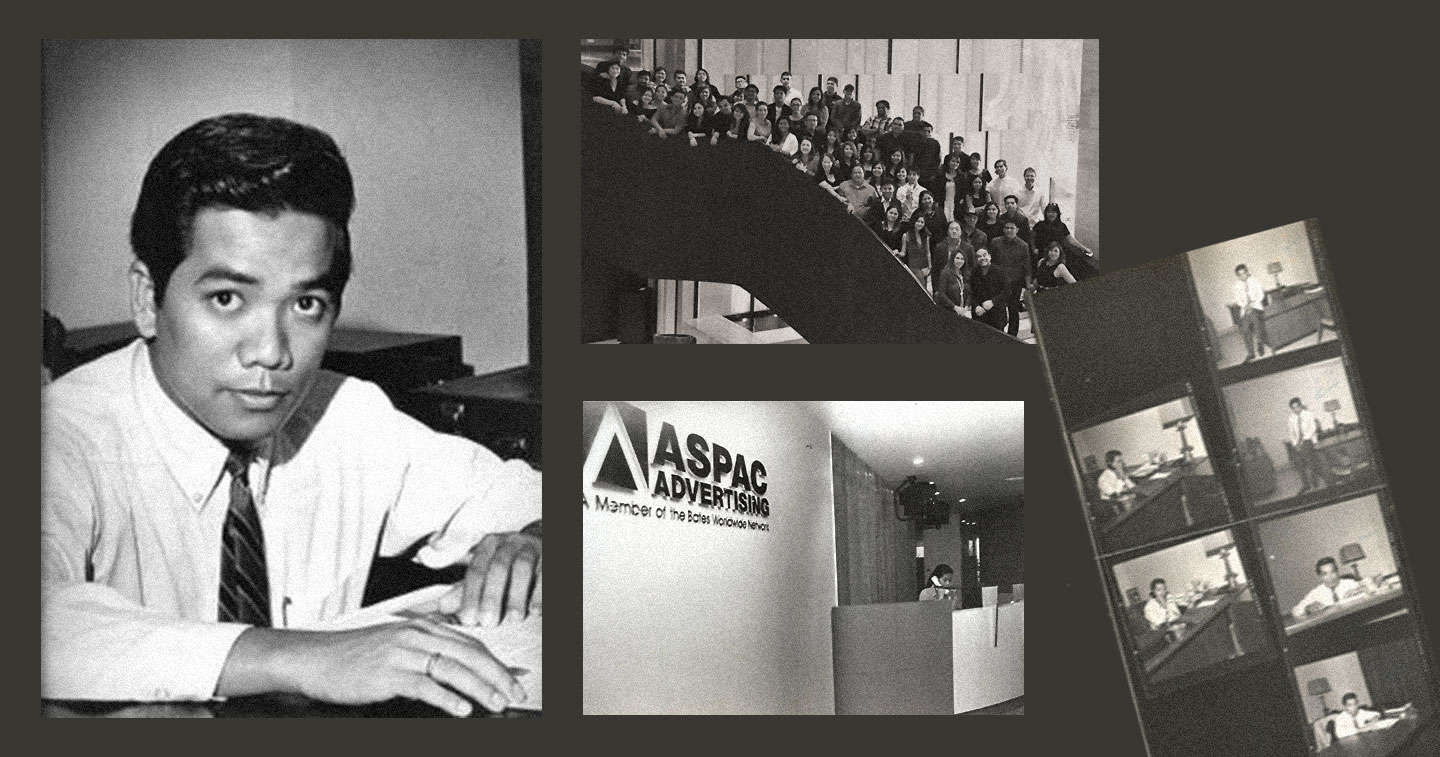MANILA, PHILIPPINES — Just a few weeks ago, Dentsu Aegis Network announced its acquisition of ASPAC, one of the Philippines’ very first advertising agencies spearheading the local ad scene. Now fully launched as Dentsu One Manila, former ASPAC Chairman (2011-March 2020) and President (1996-2011) Miguel Ramos shares with adobo magazine an exclusive piece he wrote, detailing the 45-year legacy of his father, ASPAC Founder Maximo B. Ramos Jr., and the reasons behind the ultimate decision to sell the independent agency.
Today, a crucial piece of my family and my father’s legacy came to a close. I knew the day was coming but now that it has, it has hit me hard. I realized that the decisions I myself made led down this path. Weighing the pros and cons and the options that I faced, I decided that this was the best road to take. Do I regret it? No. I still believe it was the right decision, from both a professional and personal point of view. I don’t think we should allow the memory of the past to define the opportunity of the future. However, I do believe that the best way to build a bridge to the future is on the solid foundation of the past. This is my attempt to share my perspective for those who care to read and listen.

It all started 45 years ago. My late father, Maximo B. Ramos Jr. or MBR, was then the General Manager of PAC (Philippine Advertising Counselors), which was the largest agency of the time. People who worked alongside him say that MBR contributed hugely to PAC’s stature. They recall his rapier-like intelligence, mental discipline, and highly principled work ethic as key reasons that PAC became the agency to join, grow up in and shine in for many, many people who have now made their individual marks in marketing. This was long before the present agencies were even to be counted as contenders. They had all the blue-chip accounts, both international and Philippine brands. Clients had the utmost respect for him and what he brought to the table as a business partner. San Miguel, the most iconic Philippine brand of all time, was his personal account.
On a rainy night in October 1974, my father got into a huge car accident while traveling with a friend. They skidded off a gravel road at 100 km/hour, without their seatbelts on. They then ran along an irrigation ditch, dragged some upo trellises along the way, hit a culvert pipe, and eventually, the car landed on its roof in the ditch. The thought “this is it, the end” crossed his mind along with the thought “switch off the ignition right away to minimize the possibility of fire.”
At age 35, he was hospitalized with a broken arm and 40 stitches on his forehead. The time he spent in the hospital allowed him the opportunity to reflect and realize that this was his second life. While pondering on what he was going to do next he decided to go into business for himself, and organized ASPAC in three months. The agency opened its doors for the first time in February 1975.
The name ASPAC was originally from the Asia Pacific region which was just emerging as a center of political and economic power at the time. It was also said to stand for the acronym Attentive Service Professional Advise & Creativity. Jokingly people would say it was “A Smaller PAC” referring to his past employer, to which my father would gamely reply it was “A Superior PAC.”
ASPAC in the ’70s grew into one of the leading Filipino owned agencies. Companies like RFM, Canlubang Automotive (Mitsubishi & Chrysler), Ramcar, The Mandarin, Manila Garden, and Ubix entrusted their business with the agency. One of the lesser known facts is that ASPAC was the very first advertising agency of Jollibee at the start. The insight that the aroma of food meant a superior taste experience was in the early campaigns they created. Basic Advertising eventually built on this to become the “Langhap Sarap” idea in the later years.
In 1985, the agency entered into an equity partnership with a top US Agency network, Grey Advertising, forming Aspac & Grey. During this time, a number of global clients joined the agency’s roster, Wrigley’s, Kraft Kool Aid, and Procter & Gamble. P&G brought the opportunity to take part in the shampoo wars, where the agency introduced Pantene and successfully defeated the Unilever contender (the name escapes me now) which was eventually pulled out of the market. During this period, the agency also worked with the largest Philippine Pharma company, Unilab, breathing life into some of their biggest brands, such as Neozep, Revicon, Diatabs, and Myracof. They also took Alaxan from ethical to OTC, creating the largest single brand in the pharma industry.
In 1995, my father, after much deliberation and a running conflict with Grey on management parameters, decided to buyout the shares of Grey and remain an independent agency. In turn, they resigned P&G as a client which was one of the largest pieces of business at the time. The easy way out would have been to sell his majority shares to Grey, but the desire to become independent and have the freedom to execute on his original vision for the agency was more compelling. To say that he and his partner, Ador Cruz, had balls of steel would be a pretty accurate description, considering the weight of their decision.
In April 1996, he passed away after a short illness. In a letter to his younger sister during the days he was in a reflective mood he wrote: “In the 21 years of running ASPAC, I think I’ve helped countless people, also myself and my family. I’ve provided employment to people in good times and bad, shared bountiful largesse, started the careers of some, advanced the careers of others, inculcated values in others… Maybe that was the purpose behind the accident in October 1974.”
I took on the reins of the agency in 1996. My mandate to myself was to see the agency succeed and survive despite all the odds. Industry pundits gave us six months to survive; we lasted for another 24 years. During my first month, we were introduced as a potential partner to Dentsu — not knowing that it would eventually take place decades after.
During those days, major clients like Wrigley’s, Unilab, and Metrobank gave us a chance to continue to prove our worth as their partner. They remained loyal to the agency and continued to support our new management team which included my sister Martha on the Finance/Operations side and Milet Leuterio on the creative side. We also managed to win some significant new businesses – Nokia, Roche, and Wendy’s come to mind. With Nokia (where we grew the local brand share to almost 90%), we became a regional center of excellence in a partnership that lasted 10 years. We also launched one of the courier companies into becoming an iconic Filipino brand, LBC under the banner “Hari ng Padala.” We also produced some of the best and freshest auto advertising for the Honda CRV.
https://www.youtube.com/watch?v=ZHl3777njuQ
During this time we had a very strong and young creative and strategic planning team under my youngest brother Martin and our CD Jover Layno (who passed at a young age). They were responsible for a lot of groundbreaking work for Nokia, LBC, and Honda. We won the Platinum Award for Nokia at the 2001 Advertising Congress, becoming the first and only time an independent agency won the award. Years after, we also became the first winner of the Independent Agency of the Year Award under the 4As.
https://youtu.be/KBnUBuR9-oM
In 2005, recognizing the need to provide a stronger media product, we organized Mediaforce together with four other independent agencies by combining our media departments. This eventually became the most successful Filipino founded media specialist and Aegis Media invested in the agency in 2007 and acquired majority later on.
In 2011, I was asked by the APAC CEO of Aegis Media to jump start the country operations for the group. I took on this challenge and stepped back from my day-to-day role in Aspac, taking on the role of Country CEO for Aegis Media. I eventually continued to lead the merged entity of Dentsu Aegis Network from 2014 to 2016. Under my watch, we grew the operations of DAN into the third largest media group in the country. I retired from advertising in March 2016 after completing the sale of Aspac and Mediaforce to DAN.
ASPAC during this period also grew three times in size from the time I stepped back from day-to-day operations in 2011. The new management team of Sue Dimacali, Angel Antonio, Macon Ramos, Rey Leuterio, Rissa de Guzman, Luz Bobadilla and Joey Ong created strong momentum for the business winning account assignments from Honda Cars & Motorcycles, Ginebra San Miguel and CDO Foods, to name a few of the major clients they brought on board. The agency cemented its reputation as a strong strategic partner that created campaigns and that drove business success in the marketplace.
All this though begs the question: why did I sell the company that was so much a part of my family, my team, my clients, and my own personal history? I give you three reasons:
- The game has changed.
If you want to become a player at scale, you needed to become part of a global network. It is still very much possible to operate a thriving, profitable, creative agency as a niche player but to become a leading player requires the scale, capabilities, and resources that a global network brings. Outside of the major Western markets, there is a lot of difficulty for a large independent agency to continue to grow at scale.
2. The business model is terribly outdated.
This may not be a popular point of view, but it is the truth. As much as I tried to innovate and create momentum for the future, the legacy of the traditional agency model is truly hurting the ability of agencies to redefine their business approach. The most interesting opportunities when pursued, would possibly do away with an agency model altogether.
3. It was time to go.
I believe that change is needed for an organization to continue to grow. In 2016, the Dentsu Agency Network in the Philippines was poised to have its best year ever on the back of five years of continuous growth and the entry of new companies thru acquisition which included ASPAC. I also believed that the best chance of the agency surviving in the changed environment was as part of a much larger offering that the Dentsu Aegis Network offered. Personally, I also wanted to explore new opportunities beyond the advertising and media field that had become my comfort zone for the past two decades. It was time for me to return to my entrepreneurial start-up roots and embark on a new journey.
I wish to thank all our valued clients, industry partners, team members, and friends in the industry who have been both a witness and a part of the ASPAC journey. The last 45 years would not have been possible without your understanding, commitment and support. Thank you for entrusting your brands and your company’s future with our team. It has been a truly amazing and fulfilling journey together.
As ASPAC begins a new chapter, its legacy and spirit are far from being done and continue to live on. I wish to welcome and congratulate Dentsu One Manila, its new leadership team and our old teammates who are now part of this new chapter. May the fire of creativity and passion for developing meaningful campaigns that move the needle in sales, creativity, and brand equity continue to be your ambition. May you continue to fuel the independent thinking and entrepreneurial spirit that is part of your heritage. May the advertising Gods continue to bless and guide your future success.
This is Miguel Ramos on behalf of ASPAC signing off.
About the Author

Miguel Ramos was ASPAC’s Chairman (2011 to March 2020), President (1996 to 2011) ASPAC Creative Communications/The Aspac Group.
Ramos took on the leadership of the agency at 26 years old and grew the company into a leading independent marketing communications company. The only two-time Independent Agency of the year winner for the 4As. Creatively, the only indie agency to win platinum in the Philippine Ad Congress/Araw Awards. As it reached 40 years of operations, we entered into a majority partnership with Dentsu Aegis in December 2015.
Country CEO (June 2014 to March 2016) Dentsu Aegis Network Philippines
He spearheaded the integration of the Dentsu Philippines and Aegis Media brands and managed the combined Creative and Media resource as the Dentsu Aegis Network. Grew the team to over 350 people spanning various disciplines focused on marketing communications strategies through cross platform messaging, digital creative execution, media planning and buying, mobile applications, SEO, content creation, brand tracking and marketing analytics through Seven Agency Brands – Carat, Dentsu Creative, Dentsu Media, iProspect, Isobar, Posterscope and Vizeum.











